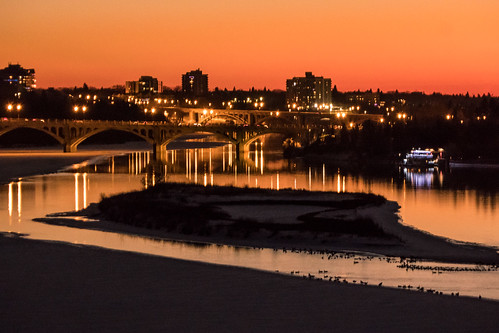Sunday, 17 December 2017
Light Pollution: A Growing Problem
In the past 20 years, night-time light emissions in North America and Europe have increased by 70%. The Milky Way and the Northern Lights are lost to large percentages of the world’s population due to reflected light from homes, businesses, and streets.
As unfortunate as that is, the loss of the dark has far more serious consequences for both human and animal health.
Health Risks
Here are just a few examples of the impact of light pollution on humans and other animals:
Artificial light lures moths and other night-time insect pollinators away from plants. A recent trial found that light exposure reduced the number of pollinator visits by 62% with 29% fewer species coming to the lighted areas (1).
Almost all small rodents and carnivores and 20% of primates are nocturnal (3). Light pollution increases their mortality rates as they have difficulty foraging, can be detected more easily by predators, and have a harder time getting away because their vision is impaired (2).
Many birds migrate at night using the stars to navigate. Pulled off course due to light pollution or killed in collisions with lighted buildings, many of them never reach their destination.
Female sea turtles, who like to nest on dark, remote beaches, are deterred from laying eggs. The young hatchlings normally head towards the ocean and away from the dark land mass. Millions die each year when they become confused by the bright lights and crawl towards the city instead of the water (2).
Excessive light inhibits frogs’ mating calls and reduces their reproductive capacity (3).
Disruption of the normal rhythm of light and dark has a significant impact on human health: “Disruption of the circadian clock is linked to several medical disorders in humans, including depression, insomnia, cardiovascular disease, and cancer, says Paolo Sassone-Corsi, chairman of the Pharmacology Department at the University of California, Irvine, who has done extensive research on the circadian clock. ‘Studies show that the circadian cycle controls from ten to fifteen percent of our genes,’ he explains. ‘So the disruption of the circadian cycle can cause a lot of health problems” (3).
Two Israeli studies show a statistically significant correlation between outdoor artificial light at night and breast cancer (3).
LED Lighting Increases Light Pollution
Greater use of LED lighting has significantly increased light pollution:
Recent satellite measurements of light pollution underestimate the actual degree of night-time radiance as satellite images aren’t sensitive to the blue-light wavelengths emitted by LED lights (4).
Short-wave LED lighting has greatly increased the amount of light scattered by the atmosphere, causing a glow over areas with little or no lighting (4).
LED lights use just a fraction of the electricity required by incandescent bulbs and last much longer. As a result, “decreases in cost allow increased use of light in areas that were previously unlit, moderately lit, or lit only during the early evening hours” (4).
“LED light bulbs are increasing light pollution because, since they require less electricity to create the same amount of light, people are installing more and more of them. ‘We’ll light something that we didn’t light before, like a bicycle path through a park or a section of highway leading outside of town that in the past wasn’t lit,’ lead author Chris Kyba, a physicist at the German Research Center for Geosciences, said to Phys.org. ‘And so all of those new uses of light offset, to some extent, the savings that you had” (5).
We assume that increased efficiency will lead to decreased demand, but that’s not the case. For example, consumers tend to travel more when they have fuel-efficient cars (6). Research has shown that, “Regardless of historical or geographical context, humans tend to use as much artificial light as they can buy for ~0.7% of GDP” (4).
There are Solutions
“We could instantly reduce the problem by about half if we assured that all outdoor lighting fixtures were fully shielded, meaning that they emitted no light directly above the horizon. . . . We could then further reduce the amount of light pollution in the world if fixtures were properly designed and installed such that the light they emit was confined to the task area, and provided in no greater intensity than needed to safely illuminate the task. Lastly, we could reduce the biological harm of our lights by ensuring that they emit as little short-wavelength (blue) light as possible, by choosing ‘warmer’ lamps,” says John Barentine, the resident physical scientist for the International Dark-Sky Association (7).
A great deal of the responsibility for reducing light pollution belongs with individual property owners. The International Dark Sky Association provides some useful tips when selecting night sky-friendly light fixtures (8).
Further Information
The High Cost of Lighting up the Night
Traffic Calming Measures to Protect Wildlife in the Swale
References
1. Light Pollution Lures Nighttime Pollinators Away from Plants
2. The Effects of Light Pollution on the Environment
3. Missing the Dark: Health Effects of Light Pollution
4. Artificially Lit Surface of Earth at Night Increasing in Radiance and Extent
5. Energy-saving LED Lightbulbs are Contributing to Light Pollution
6. Jevons Paradox
7. Switch to Outdoor LED Lighting has Completely Backfired
8. Outdoor Lighting Basics

